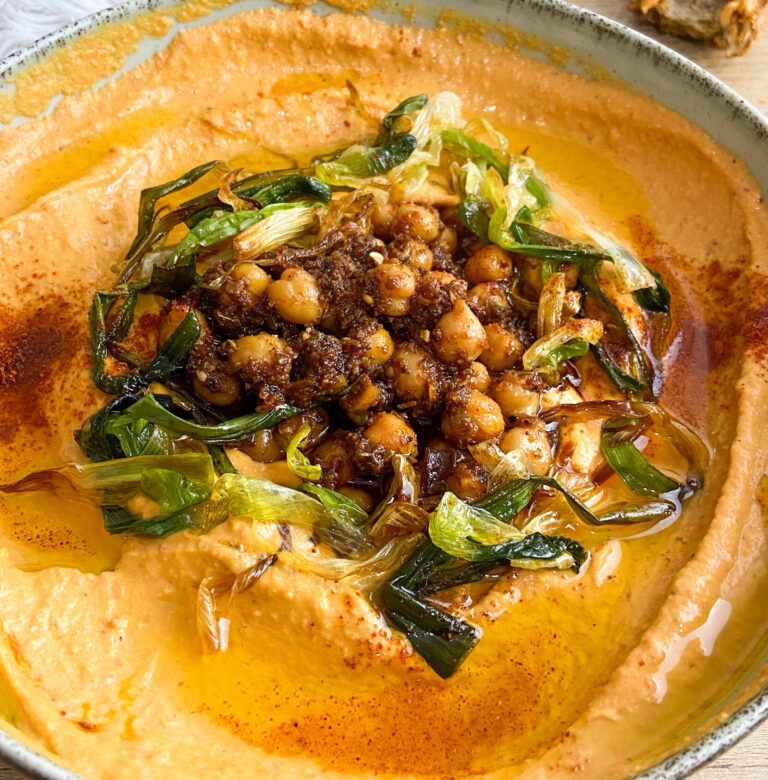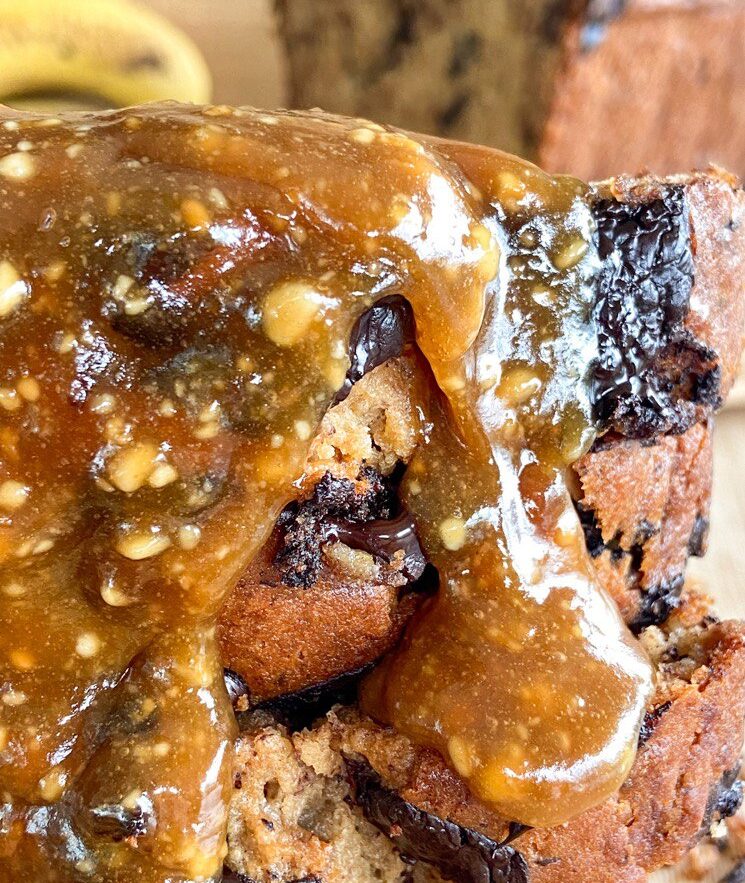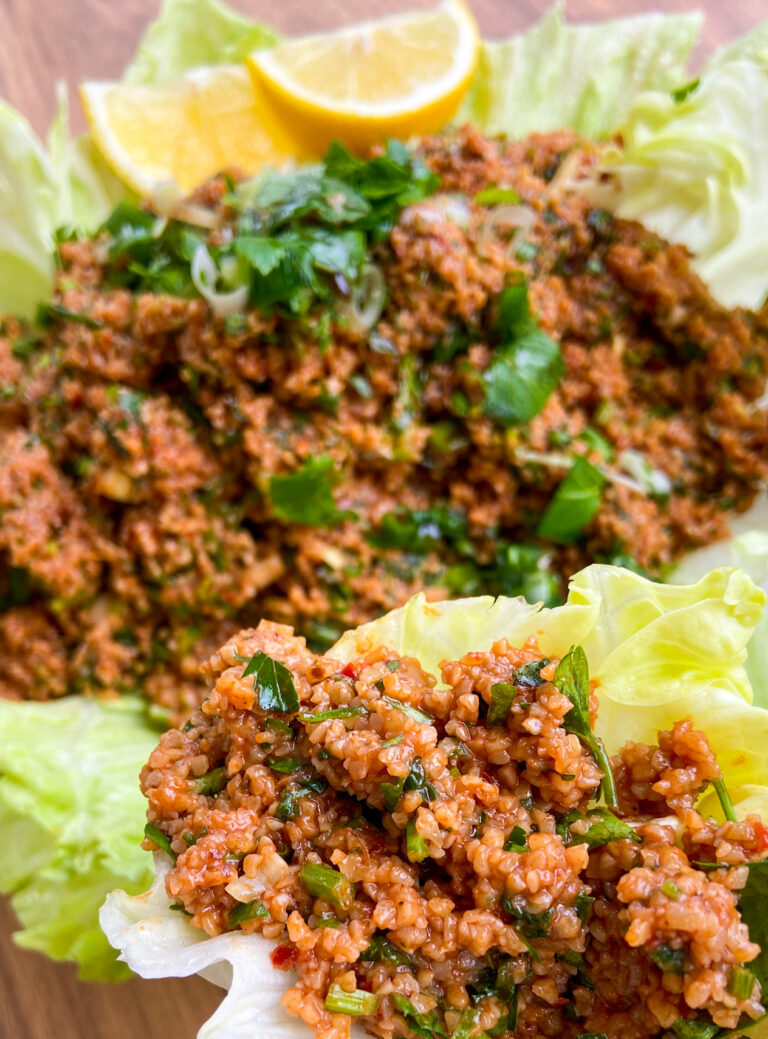Loobia polo which literally translates to bean rice is anything but your average bean rice. This simplified plant-based version will save you time but still comforts you with every bite. From the crispy lavash tahdig (which translates to the bottom of the pot) to the fluffy saffron-infused rice, every bite will leave you wanting more.

The reason why I added “inspired” to the title is because this dish is traditionally made with meat and the carrots are debatable. My mom always adds carrots and doesn’t always add meat so that’s what I’ve done here. I’ve also used dried soy protein to replicate the minced meat and add some protein. But it’s definitely not necessary. You can also leave out the carrots if you’re not a fan but one thing you shouldn’t omit is the saffron! Saffron is a staple ingredient in Persian cooking for all the right reasons. The taste and scent have no match and it really elevates a dish. Do yourself a favor and invest in a tiny bit of saffron. A little goes a long way.



Vegan Persian-inspired Green Bean Rice with Crispy Potatoes (Loobia Polo)
Prep time: 15 minutes
Cook time: 1 hour
Serving: 2-3 portions
Ingredients
- ⅛ tsp ground saffron*
- ½ cup dried soy protein, optional
- 1 tsp vinegar
- 1 large carrot
- 2.5 cups (270g) of green beans (string beans work best)
- 1 large white onion
- 2.5 cups (270g) of green beans (string beans work best)
- 1 cup (170g) long-grain rice, I used Basmati
- 4 tbsp oil or ghee
- 1 tsp turmeric
- ½ tsp cumin
- ½ tsp cinnamon
- 1 tsp paprika, optional
- Salt and black pepper
- 1 tbsp tomato paste
Notes
-The amount of bread depends on the bottom of your pot, as you will line the bottom with bread.
-It is crucial to use ground saffron, as that is how it releases most of its color and aroma. Grinding it with sugar/sugar cubes helps break it down easier and stops the color from darkening. You can use an electric spice grinder or a pestle and mortar. Simply grind 1 gram of saffron with 1 sugar cube and store it in an airtight container, in the fridge.
Instructions:
1. Add the saffron to a small cup and place 3 ice cubes on it. The ice is slowly going to melt and leave us with a beautiful saffron extract. Cover the dried soy protein with hot water and 1 tsp of vinegar. Cover with a plate and let it sit. Wash the rise 2-3x or until the water runs clear. Cover with water and let the rise soak while we prepare the other ingredients.
2. Cut the ends of your carrot, then chop it into 4-5 logs (crosswise). Each log should be around 1- 1 ½ inch long. Then, slice each log into 4-5 pieces (lengthwise). Cut the slices into 4-5 strips and you are left with medium-sized julienne carrots. Heat 1 tbsp of oil in a pan, and saute your carrots on medium-high heat until they change color and the corners turn golden brown, for around 5 minutes.
3. While the carrots are on the stove, Prepare your beans. Wash and cut them into bite-sized pieces, around ¾ – 1 inch long. Once the carrots are done sautéing remove them and in the same pan, saute the beans on medium-high for around 5 minutes or until the skin is blistered and slightly browned. Remove the beans and set aside for later.
4. While the beans are sautéing, dice the onions. Drain and squeeze the excess liquid from the soy proteins and saute them with 1 tbsp of oil for 2-3 minutes, or until lightly browned. Toss the onions in the same pan with a sprinkle of salt to help them sweat. Saute them on medium-high heat without any additional oil for 3-4 minutes or until translucent and lightly browned. Now, add 2 tbsp of oil to help them caramelize. Fry for an additional 2-3 minutes until they are light brown, but not fully browned.
5. Lower the heat, and add in the seasonings: 1 tsp turmeric, 1 tsp black pepper, 1 tsp salt, ½ tsp cumin, and ½ tsp cinnamon. Saute the seasonings with the mix for a minute until they are fragrant. Add in 1 heaped tbsp of tomato paste and saute the paste for an additional minute. This intensifies the flavor and color. Now add the carrots and the beans to the pan and give everything a stir.
6. Add 1 cup of boiling water to the pan. Once the mixture is boiling, cover with a lid, turn it down low, and cook for 15 minutes, or until the beans are tender. Make sure there is no excess water. This mixture is more like a filling rather than a sauce.
7. While the mixture is cooking, fill a pot halfway with water. Bring it to a boil and add 2 tsp of salt. Once the water is boiling, throw in the rice and cook for no longer than 5 minutes. You want the rice to be al dente. After 5 minutes strain and rinse with cold water, set aside.
8. Now off the heat, add enough oil to the bottom of your non-stick pot until it’s well coated. add 1-2 tsp of the saffron extract to the cold oil and give it a swirl. Line the bottom of the pot with lavash, make sure the pieces of bread don’t overlap.
9. Now we are going to assemble the dish. Place ⅓ of your white rice on top of the bread, followed by half of the bean mixture. Repeat this step one more time, and finish off with the white rice. Use the bottom of a spoon to puncture 5-6 holes in the mixture. This helps the rice steam evenly. Drizzle on any of the remaining saffron water. Wrap the lid of the pot with a clean towel/cloth so it could collect any excess moisture. Cover the pot with the lid. Turn the heat to medium-high for 3-4 minutes, then turn the heat low and let it steam for 30 minutes. For best results use a heat diffuser.
10. After 30 minutes, turn off the heat and let the pot rest for a minute. Run a knife around the edges of the rice to separate the crispy rice from the pot. Place a large plate (preferably with edges) on top of the pot, and carefully flip it over. If the lavash did not come off, just use a spatula to detach them and place them on top of the rice.
This rice is best served with a refreshing and slightly tangy side, such as Shirazi salad, yogurt, pickles, or my quick and easy Charred Eggplant and Pomegranate Chutney.



